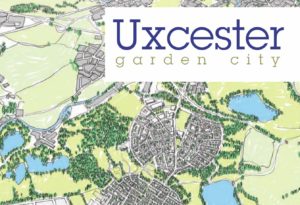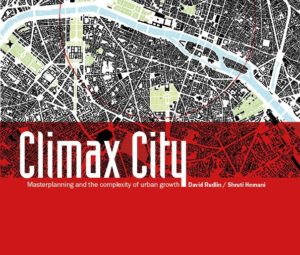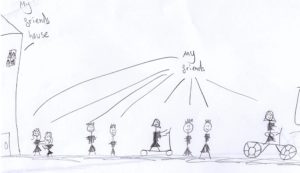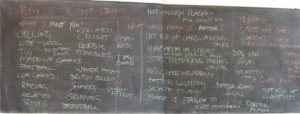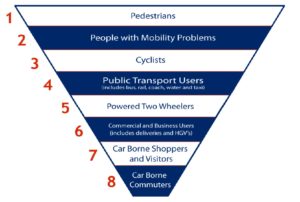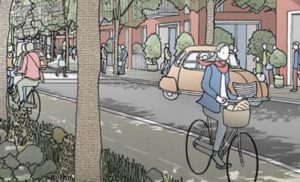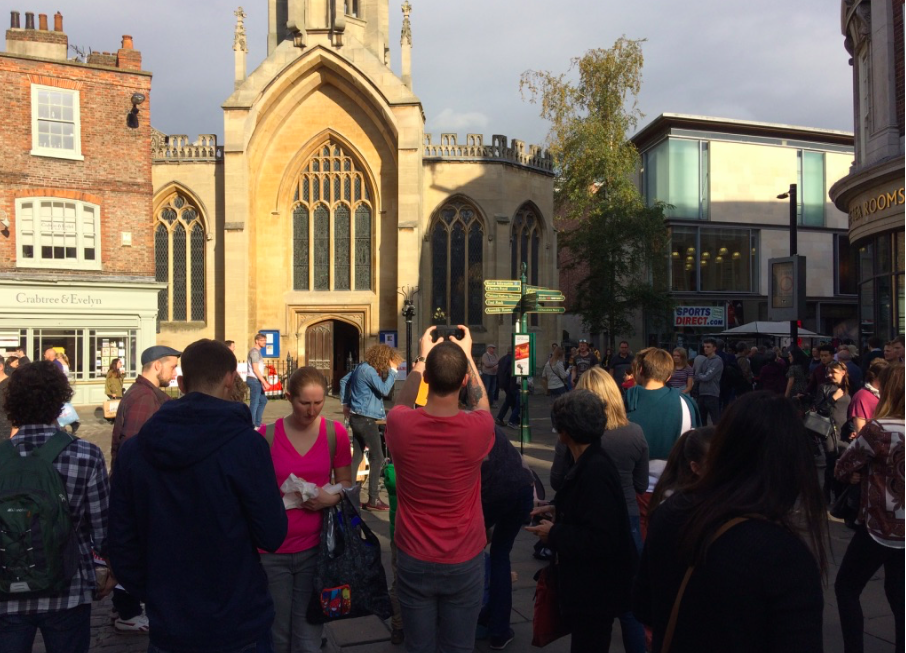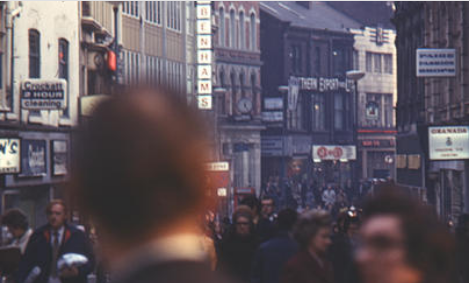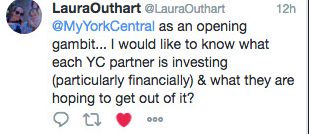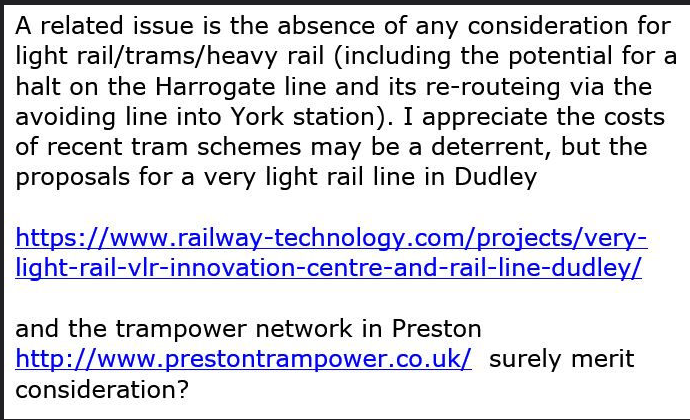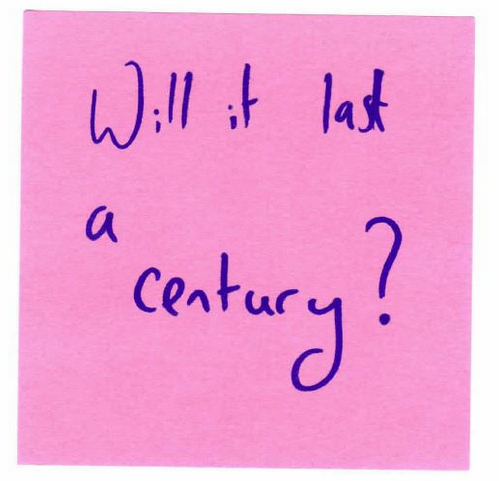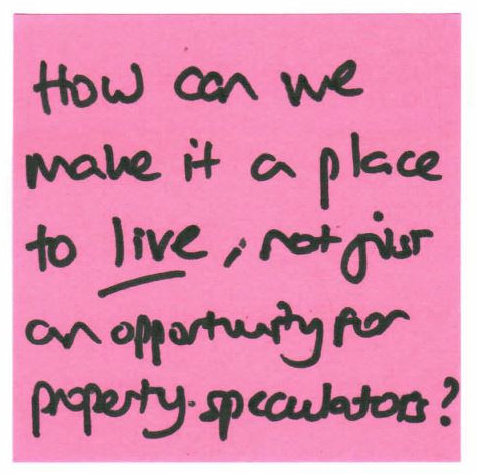Again we took the questions from the second week of My York Central to the York Central Partnership. Their responses are published below each question. Some answers are clear and address the concerns the questioners were raising. Other responses inevitably invite further questions, discussion and exploration. We’ll be using these cases – where there is no simple or settled ‘answer’ – to help us design events to deepen the conversation during The Festival of York Central. Again we’d love anyone interested to come forward with ideas for events.
So to each of the York Central Partnership responses below we ask: What further questions or issues does this raise for you?
Question 1. In terms of the York Central Partnership, who is investing what and what to they want to get out of York Central?

Response from York Central Partnership:- All Partners are committed to delivering the development of York Central in order to provide the economic growth, housing delivery and cultural growth at York. To date, the Partners have individually invested various sums of money into York Central – CYC has allocated £10million, of which £4.4million has been approved to be spent, Network Rail has similarly spent £4.4m on land assembly and rail clearance, Homes England has spent £18.9m towards land assembly and has contributed a further £200k towards the planning costs of the site. The National Railway Museum has spent £1.14m to date on the masterplanning of its museum development scheme, which will represent an investment of around £50 million to deliver.
Question 2. How can we make the streets of York Central full of children playing?
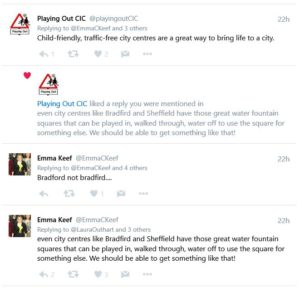
Response from York Central Partnership:- We are proposing that York Central will include a variety of housing types and sizes for all age groups including families with children that will make it their home. The park and open spaces will be open to them and to the wider community and should be seen as a destination in the city for relaxation and play with the steam trains of the NRM forming a backdrop. Streets and courtyards in the residential areas will include space for playable streets and local doorstep play as well as more formal play locations.
Question 3. Where are the planners – Allies and Morrison – getting their inspirations from?
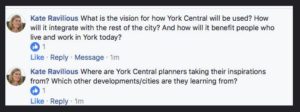
Response from York Central Partnership:- Our inspiration for York Central comes from the site itself, its railway history and the heritage buildings that remain. We are also interested in understanding and resolving it’s inherent challenges and addressing it’s setting and integration within the wider city fabric and character of York. We have looked at York precedents; of urban block structure and the scale and nature of buildings and streets, squares, lanes and yards in the city. We want the layers of history of the site not to be erased, but be overlaid and legible in defining a rich sense of place that is very much part of 21st Century York.
Question 4. Have we properly considered trams and light rail?

Response from York Central Partnership:- A tram or light rail has been considered for York previously but is no longer being proposed within the current Local Transport Plan for the city, which is focusing much more on the bus provision including the Park and Ride services. In this context, we are working to make the best use of the current and planned public transport provision.
Follow-up:- Can York Central go beyond the thinking in the Local Transport Plan and pilot more radical forms of sustainable transport, given its unique position as a new quarter, in the way other similar-scale developments have overseas?
Question 5. How long will York Central last? Are we building an area of the city to last as long as parts of York’s city centre?
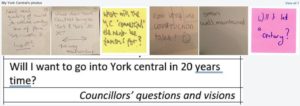
Response from York Central Partnership:- We are seeking to create new neighbourhoods for York with well-designed and well-constructed buildings and infrastructure that will last for decades. In order to ensure longevity, York Central must be flexible to respond to changes in society, including how people live, work and spend their leisure time. If we get this right, we expect the neighbourhoods to be around for many years to come.
Question 6. How can we ensure all the property doesn’t get sold off to investors?
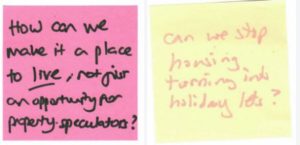
Response from York Central Partnership:- We are focusing on ensuring that the mix of homes to be built at York Central creates a supply that can help to meet the local demand for housing, specifically ensuring it has the right sizes of homes to meet the needs of York’s residents. Some of these homes will be ‘affordable’ homes, which will be owned and managed by housing associations, who can prioritise local people in their lettings policies. The site will create a supply of land to be used for open market homes and it is anticipated this could be a mix of sale and rent but the nature of purchasers cannot be restricted under current national planning and housing policies. Suggestions on details of any such restrictions that have been proven to work would be welcomed.
Follow-up:- Are there specific tenure options or other arrangements which would ensure long-term availability as affordable housing, rather then the homes becoming commodities?
